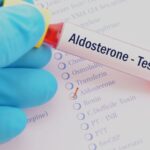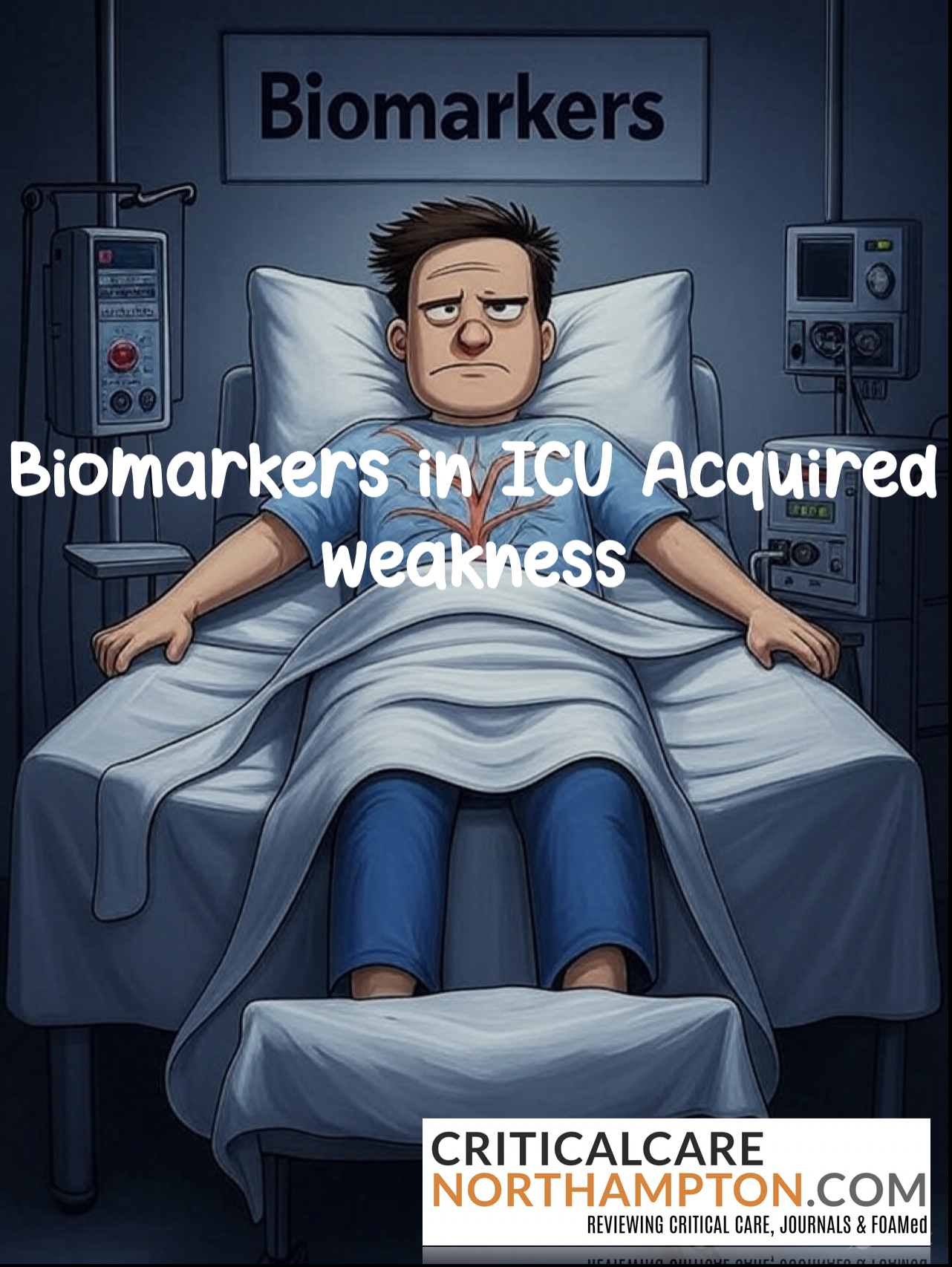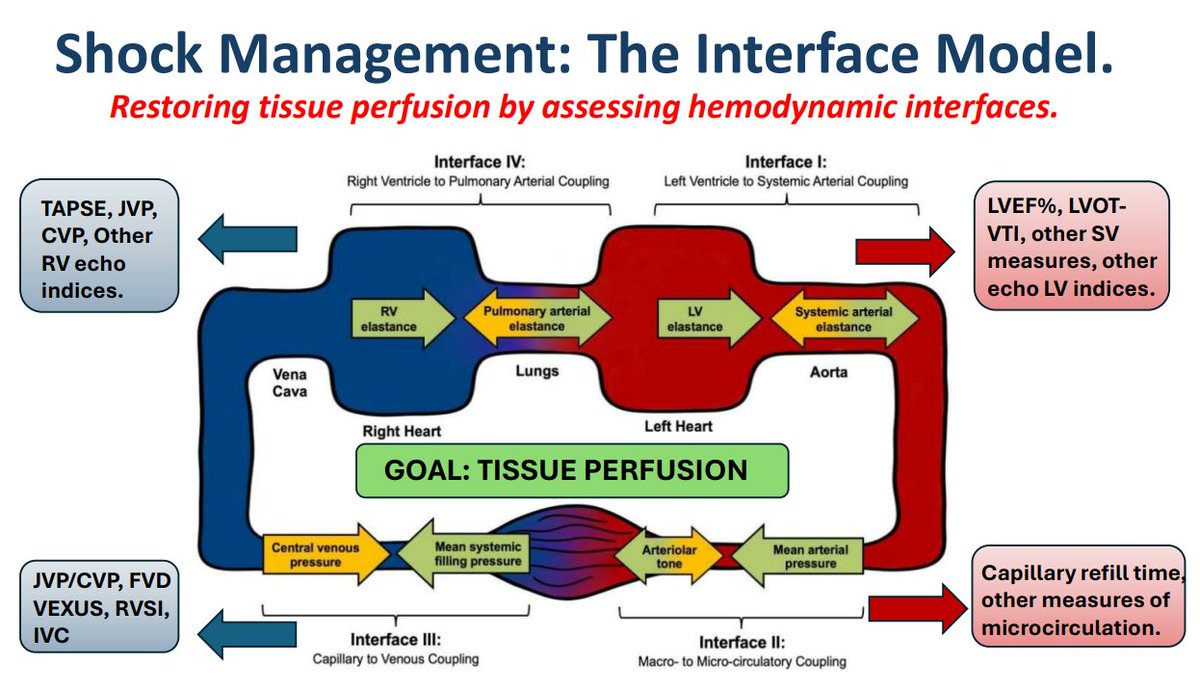What was it?
Single-center, prospective, observational study evaluating the clinical characteristics and predictive biomarkers of intensive care unit-acquired weakness (ICU-AW) in patients with cardiogenic shock (CS) requiring mechanical circulatory support (MCS). Conducted at Kyushu University, Japan, the study focused on identifying factors associated with ICU-AW, defined by a Medical Research Council (MRC) score < 48 points after awakening.
The Devil in the Details!
- 20 patients enrolled (23 analyzed for MRC score) at 1 academic hospital in Japan.
- Patients aged ≥16 years with CS requiring MCS (e.g., ECMO, Impella, or intra-aortic balloon pump).
- ICU-AW diagnosed based on MRC score < 48 points post-awakening; non-ICU-AW group had MRC score ≥ 48 points.
- Primary focus: Clinical characteristics (e.g., patient demographics, MCS duration) and biomarkers (e.g., inflammatory markers, organ function indicators) associated with ICU-AW.
- Secondary focus: Exploratory analysis of potential early predictors of ICU-AW, such as lactate, renal, and liver biomarkers.
- Conducted per the Declaration of Helsinki, with ethics approval (license number: 2019–585) and informed consent.
The Results!
- Of 20 patients evaluated, 13 (56.5%) developed ICU-AW (MRC score < 48).
- Creatine kinase and troponin T levels were significantly higher in the ICU-AW group (p < 0.05), while hemoglobin and albumin levels were significantly lower in the ICU-AW group than the non-ICU-AW group.
- The ICU-AW group showed significantly elevated IL-15, indicating multiple organ damage, compared to the non-ICU-AW group.
- Median %grip strength were 75% and 77% in the ICU-AW and non-ICU groups, respectively.
- Both groups showed lower grip strength than adults of similar age
- %Peak VO2 at 6 months were also low but comparable between the groups (54% in the ICU-AW group vs. 50% in the non-ICU-AW group, p = 0.53)
- Serum IL-15 level on day 1 demonstrated a strong negative correlation (r=− 0.75, p < 0.001) with the initial MRC score
- IL-15 exhibited an even stronger correlation (r=− 0.81, p < 0.001) with the lowest MRC score during the study. IL-15 levels were significantly higher in the ICU-AW group on days 1, 3, and 7, with no significant between-group difference (p = 0.48) at discharge
- ICU-AW group had longer MCS duration (median 7 vs. 3 days, p=0.02) and higher rates of acute kidney injury (76.9% vs. 30%, p=0.03).
- ICU-AW patients had prolonged ICU stays (median 14 vs. 7 days, p=0.01) and higher in-hospital mortality (38.5% vs. 10%, p=0.09, not statistically significant).
- Early lactate levels and renal dysfunction were identified as potential predictors of ICU-AW, though no single biomarker was definitive.
They concluded
The authors concluded that ICU-AW is common in CS patients requiring MCS, associated with prolonged MCS duration, acute kidney injury, and elevated lactate and liver enzymes. Early identification of these factors may help predict ICU-AW risk, but further studies are needed to validate biomarkers and develop targeted interventions. IL-15 may be a valuable predictive biomarker of ICU-AW, which may be useful for early identification of ICU-AW in patients with CS using MCS
Gripe Point Summary!
Detailed gripes below, but key limitations include:
- Small sample size (28 enrolled, 23 analyzed) limits statistical power and generalizability.
- Single-center design may not reflect diverse patient populations or clinical practices.
- Observational nature prevents causal conclusions about ICU-AW predictors.
- Limited biomarker panel; novel markers (e.g., dipeptidyl peptidase-3) not explored.
- Lack of long-term functional outcomes or rehabilitation data.
- Potential confounding by unmeasured variables (e.g., sedation protocols, nutritional status).
- High dropout rate (5 patients not evaluated for MRC score due to death or other reasons).
- No standardized MCS protocol, potentially affecting outcomes.
Our Summary
In CS patients requiring MCS, ICU-AW was frequent (56.5%) and linked to longer MCS duration, acute kidney injury, and elevated lactate and liver enzymes. This study highlights the burden of ICU-AW in this population and suggests early lactate and renal dysfunction as potential predictors. However, its small, single-center, observational design calls for larger, multicenter trials to confirm findings and explore targeted interventions.
Who’s worked on this before?
Further gripes
- Small sample size and high dropout rate: Only 28 patients were enrolled, with 5 excluded from MRC score analysis due to death or other reasons, reducing statistical power and introducing potential bias. A larger sample is needed to confirm findings.
- Single-center design: Conducted at Kyushu University, limiting generalizability due to potential variations in MCS protocols, patient demographics, and ICU practices across centers.
- Observational study limitations: The non-interventional design cannot establish causality between biomarkers (e.g., lactate, liver enzymes) and ICU-AW, only associations.
- Limited biomarker exploration: The study focused on traditional biomarkers (lactate, renal, liver markers) but did not assess newer candidates like dipeptidyl peptidase-3, which may be relevant in CS.
- No long-term outcomes: The study focused on ICU stay and in-hospital mortality but lacked data on long-term functional recovery or rehabilitation, critical for ICU-AW patients.
- Potential confounders: Variables like sedation protocols, nutritional support, or physical therapy, which could influence ICU-AW, were not detailed or controlled for.
- MCS heterogeneity: Patients received varied MCS devices (e.g., ECMO, Impella), but the impact of device type on ICU-AW was not analyzed, potentially confounding results.
- Statistical concerns: The small sample size and non-significant p-values (e.g., mortality, p=0.09) suggest underpowering for some outcomes, limiting the reliability of conclusions.
- Lack of standardized MRC timing: MRC scores were assessed “after awakening,” but the timing was not standardized, potentially affecting consistency of ICU-AW diagnosis.
- Exclusion criteria: Patients <16 years or those unable to undergo MRC testing were excluded, potentially narrowing the study’s applicability to broader CS populations.
CCN’s Reflection
This study sheds light on the high prevalence of ICU-AW in CS patients on MCS, linking it to prolonged MCS use, acute kidney injury, and elevated lactate and liver enzymes. It’s a valuable step toward identifying at-risk patients, but the small, single-center, observational design and limited biomarker scope temper its impact. The findings scream for validation in larger, multicenter studies with standardized protocols and broader biomarker panels. Until then, it’s a tantalizing hint at predictive tools for ICU-AW, but we’re not ready to rewrite the playbook on CS management. Stay tuned for the next chapter!
Written by JW









